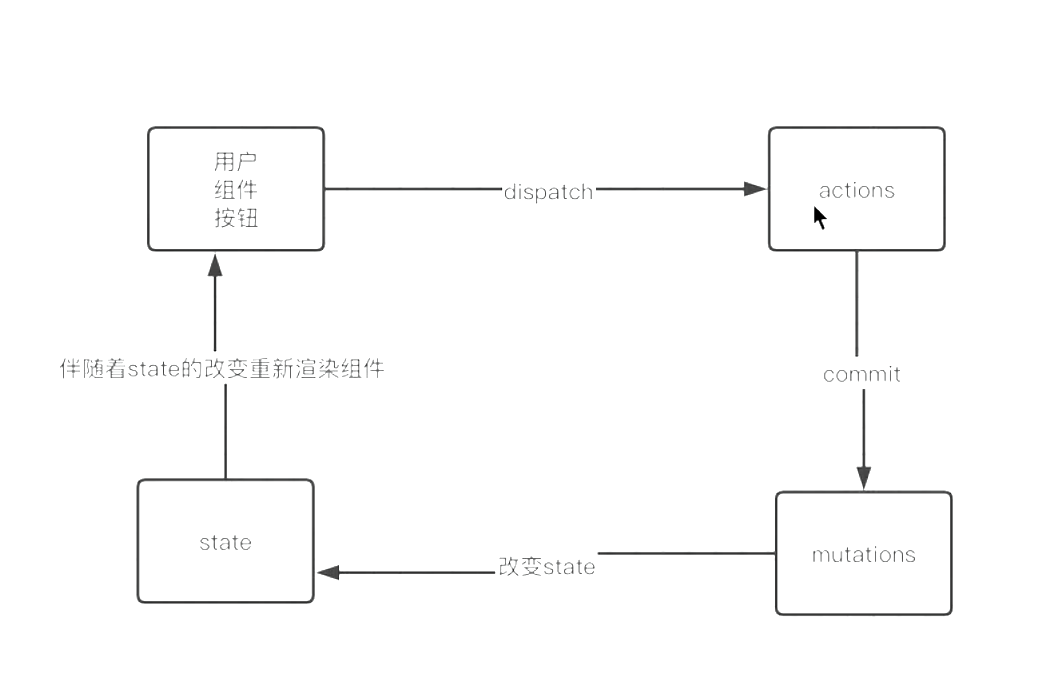3 个回答
vuex数据状态的设置

这张图说明的是数据变动流程:
- 用户组件触发动作actions(异步操作)
- actions 里通过 commit 触发 mutations(同步操作)
- mutations 里控制 state 状态的更新
- state 变动后组件重新刷新
vuex数据状态的获取
最简单的获取状态值
computed:{
name(){
return this.$store.state.name //获取某state中的name值
}
}
使用computed计算属性是为了当state变动时及时刷新组件上面的简化方式: (使用mapState)
import {mapState} from "vuex"
computed:{
...mapState(['name']), //属于对上面的简化
}对mapState内的变量使用别名
...mapState({
new_name: (state)=>state.name, //使用 new_name代替了name
})vuex中的getters定义:
{
getters:{
name: state => {
return state.name
}
}
}之所以定义到vuex里就是因为它时共享的,全局的,所有的组件都可以使用getters里动态state值.
上面的简写使用 mapGetters :
import {mapGetters} from 'vuex'
computed:{
...mapGetters(['name'])
}
**vue内使用:this.$store.getters.name**vuex内的mutations, 相当于vue中的methods,也就是操作状态的方法
mutations:{
call(state,value){
state.name = state.name + value
}
}
**vue调用: this.$store.commit('call','izhangbo')** 对象的方式 this.$store.commit({type:'call',value:'izhangbo'})对于mutations(定义同步方法)中的方法名,通常使用常量定义来管理
const CALL = 'call';
mutations:{
[CALL] (state,value){
state.name = state.name + value
}
}
**vue调用: this.$store.commit({type:'CALL',value:'izhangbo'})**对于异步的方法使用actions定义, 它也是类似于methods
actions: {
callme({commit}, value){
commit('CALL', value) //这里就相当于调用mutations内的方法
}
}
**调用: this.$store.dispatch('callme', {value})**modules 的作用: 就是将同一模块下的state/getters/mutations/actions/方法常量 都放在一个目录下,定义完之后在 /store/index.js 的全局vuex状态文件内就可以直接使用模块了,(如果没有模块前,所有的状态信息都是定义到这同一个文件内的,项目复杂后会非常庞杂难以管理),模块方式的写法:
import Vue from 'vue'
import Vuex from 'vuex'
import user from './user'
Vue.use(Vuex)
export default new Vuex.Store({
modules:{
user,
}
});
**vue内的调用: this.$store.state.user.name**


